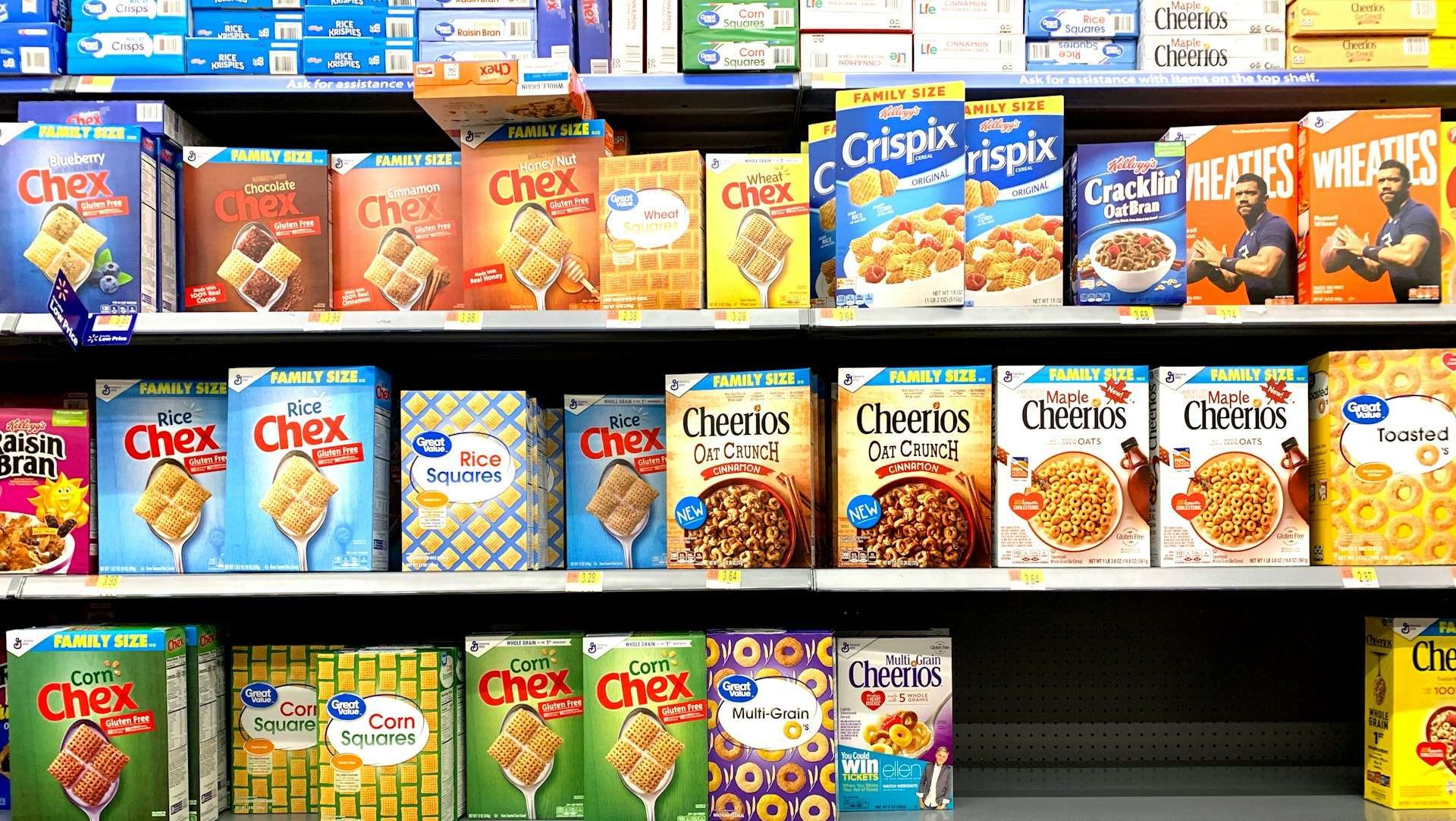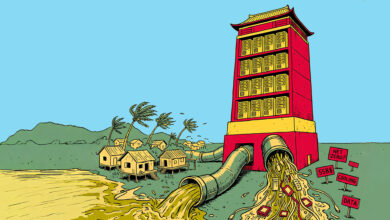Food Insecurity and Business Ingenuity

Political pressure and high levels of uncertainty are a big concern for businesses today. And such concerns can have a ripple effect on the communities and nonprofits that rely on and benefit from partnerships with the private sector. I was recently reminded of this at my local Giant grocery store which featured a special promotion: if a customer spent $15 on select grocery items, Giant would contribute $10 to local food banks. This promotion was co-sponsored by Feeding America, America’s “largest hunger-relief organization.”
Feeding America actively seeks out collaboration with the private sector, and initiatives like this were in full swing throughout September given its designation as “Hunger Action Month.” Next month, for November’s Giving Tuesday campaign, Feeding America will be encouraging individuals and organizations not only to donate but also to direct their purchases toward brands that support hunger relief efforts.
Health and nutrition are a top concern now that the “largest cuts to SNAP and Medicaid in history” have gone into effect and Feeding America claims that food insecurity is at “its highest rate in over a decade.” In the United States, 47 million people, including 14 million children, are in need of hunger relief; statistics such as these may be hard to come by moving forward, though, now that President Trump put an end to the USDA’s reporting of food access data.
The uncertainties that many are bracing for in the coming months may prompt further interest from sympathetic and empathetic individuals to get involved. However, the true ability to tip the scales when it comes to impact lies with the corporate realm. Companies ranging from Kroger to Coinstar and Dardone to Disney have partnered with Feeding America to contribute funds, promote programs, and amplify awareness. And while corporate-sponsored campaigns can be both substantial and significant, it is important to note that they are not sufficient to ensure lasting change. Investment in development is what is needed most.
Food Desert Dilemmas
Food insecurity is a multifaceted issue, and it is a prominent concern in communities designated with food desert status. Food deserts are areas that are deemed to have limited access to affordable and nutritious food options, and this can be attributed to a lack of stable supply chains, inefficient distribution systems, and underdeveloped retail networks. And, unfortunately, incentivizing investments in infrastructure in communities with food desert status is a tricky matter.
Grocery chains and convenience stores only open up where business activity can be guaranteed—in locations where both population density and purchasing power are strong. As someone who lives not too far from a Walmart, a Weis, and a Wegmans, not to mention a Giant and a Grocery Outlet, my food options are wide, and I have a choice of price points. I have a local butcher, a local farmstand, and even a food subscription service that delivers meals to my door. I am fortunate to live in an area that has attracted all types of stores, restaurants, and vendors which tap into and leverage each other’s networks. When a Pepsi Co. truck drives through town, it is probably making multiple delivery stops—at grocery stores, gas stations, casual dining spots, and even school cafeterias.
To be sure, suppliers, distributors, and competitors will share channels for transporting goods and engaging with consumers. But, when such networks are lacking, so too are corporate interests, especially when consumer income is constrained.
First Mover Dedication
Fragmented retail and distribution systems deter development due to high upfront costs. Those willing to take up the charge, though, may find themselves as beneficiaries to what is known as “first mover advantage.” Being the first to offer a new product or service to an underserved market can sometimes help a firm accrue a competitive edge. The company can gain market share early on and implement strategies for encouraging consumer loyalty. And, by stimulating the local economy, spillover effects for development can occur that may be of benefit to the business over time. As in the words of Jean-Baptiste Say, “supply creates its own demand.”
The downside of being a first mover, however, is the risks involved with initial investments, establishing new infrastructure, and covering the pioneering costs associated with generating interest from a new consumer base. But, as the saying goes, to win big you must play big, and one of Feeding America’s corporate affiliates, Dollar General, is doing just that.
Dollar General has been expanding its store footprint in a dramatic way. According to data featured by Statista, Dollar General has more than doubled in store count over the past two decades, and, in 2023, it was “the leading retailer with the most store locations in the United States.” As of September, there are 20,388 Dollar General stores across the US.
New Designs and Diversified Formats
Recently, I drove past a brand-new Dollar General that felt like it was a bit in the middle of nowhere and looked very different from the stores that I am accustomed to. The black and yellow brand colors were downplayed by giant green signage that read “Market.” This store, a Dollar General Market, had opened up a few weeks ago in the small town of Cochecton in Sullivan County, New York. Dollar General first introduced the concept of “Market” stores in 2003, and the physical expansion of these stores over time has been well received, particularly in communities with food desert status. What makes Market stores distinct from traditional Dollar General stores is a larger layout and expanded options for dairy products, fresh produce and meats, frozen and refrigerated foods, and general merchandise.
Dollar General’s determination to grow its retail footprint, in a variety of formats, is good news for communities that other stores have shied away from. In fact, 80% of Dollar General stores are located in areas with low population density, and Dollar General stores are “in more locations than any other US retailer,” giving the brand a unique opportunity to serve markets in need of hunger relief.
Networks for Development and Distribution
Dollar General isn’t just expanding stores and store formats; it has also made it a point to seek out new connections with local vendors and area businesses. Inventory management will be a top priority now that more and more Dollar General stores will be carrying fresh groceries and perishable products, so this is a strategic move. And, by investing in new distribution centers and cold storage facilities, along with leveraging Shelf Engine’s AI-driven platform for processing produce orders, Dollar General’s aim is to ensure that its featured items remain both affordable and available.
The availability and affordability of healthy food options is the biggest issue faced by those battling food insecurity, so Dollar General’s expansion plans can have quite an impact on communities in need. Moreover, Dollar General’s investments for bulking up and streamlining its logistics networks not only helps with in-store sales but also provides greater options for online ordering. And this is of great interest to those in the gig economy since Dollar General recently announced its partnership with Uber Eats. This collaboration will likely be well received by those looking for flexible work opportunities as well as by shoppers who are constrained by limited mobility or limited time.
Indeed, cost-conscious consumers, food desert dwellers, health-oriented individuals, as well as supplier and distributor networks may find themselves all better off thanks to the growth of a retail discount chain.
Business Connections for Community Concerns
Here’s hoping Dollar General finds success in its new ventures, and that its success will spur on interest and competition in underserved areas. Businesses clearly provide much more than products and services; they provide access. Access to jobs, access to networks, access to opportunities for economic growth, and access to funding streams for community needs. Dollar General serves “nearly 45% of US counties through product donations to Feeding America,” and in July it was announced that Dollar General would contribute “an additional $1 million donation to celebrate its fifth-year partnership anniversary with Feeding America.”
Over the years, Dollar General has contributed to Feeding America’s mission in significant ways, but the development derived from its investments (if done successfully) will have a much greater impact than the donations being made.
So, the next time you go shopping and are prompted to support a cause-related campaign, like I was at Giant, give what you want whenever you can. But, rest assured, your shopping trip in and of itself is of value not only to yourself but also to many of those around you. Your patronage and the profits generated from it can incentivize investments, prompt network developments, and create a ripple effect of spillover benefits.
Growth is good for business, and business is good for communities in need of them.
The post Food Insecurity and Business Ingenuity was first published by the Foundation for Economic Education, and is republished here with permission. Please support their efforts.



